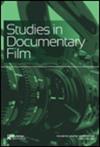澳洲黄貂鱼(板鳃目:蝙蝠总科)寄生一新种
IF 0.8
4区 综合性期刊
Q3 MULTIDISCIPLINARY SCIENCES
Transactions of the Royal Society of South Australia
Pub Date : 2019-06-10
DOI:10.1080/03721426.2019.1624932
引用次数: 2
摘要
摘要:1948年首次在澳大利亚地区报道了Caulobothrium Baer属,描述了来自北领地、西澳大利亚和昆士兰的黄貂鱼Pastinachus ater (Macleay)(黄貂鱼科)螺旋肠的C. pedunculatum sp. nov.。新种与同系物的区别在于,每双胞体有56 ~ 62个子房,有两排成对的子房,生殖孔的位置和成熟节中60 ~ 91个睾丸的分布。本文章由计算机程序翻译,如有差异,请以英文原文为准。
Caulobothrium pedunculatum sp. nov., a new species of cestode (Platyhelminthes) parasitic in Australian stingrays (Elasmobranchii: Batoidea)
ABSTRACT The cestode genus Caulobothrium Baer, 1948 is reported from the Australian region for the first time with the description of C. pedunculatum sp. nov. from the spiral intestine of the stingray Pastinachus ater (Macleay) (Dasyatidae) from the Northern Territory, Western Australia and Queensland. The new species is differentiated from congeners by the presence of 56–62 loculi per bothridium, two rows of paired loculi, the location of the genital pore and the distribution of the 60–91 testes in the mature segment.
求助全文
通过发布文献求助,成功后即可免费获取论文全文。
去求助
来源期刊
CiteScore
1.40
自引率
12.50%
发文量
17
审稿时长
>12 weeks
期刊介绍:
Published since 1880, the Transactions of the Royal Society of South Australia is a multidisciplinary journal that aims to publish high quality, peer-reviewed papers of particular relevance to Australasia.
There is a particular focus on natural history topics such as: botany, zoology, geology, geomorphology, palaeontology, meteorology, geophysics, biophysics, soil science and environmental science, and environmental health. However, the journal is not restricted to these fields, with papers concerning epidemiology, ethnology, anthropology, linguistics, and the history of science and exploration also welcomed.
Submissions are welcome from all authors, and membership of the Royal Society of South Australia is not required.
The following types of manuscripts are welcome: Reviews, Original Research Papers, History of Science and Exploration, Brief Communications, Obituaries.

 求助内容:
求助内容: 应助结果提醒方式:
应助结果提醒方式:


